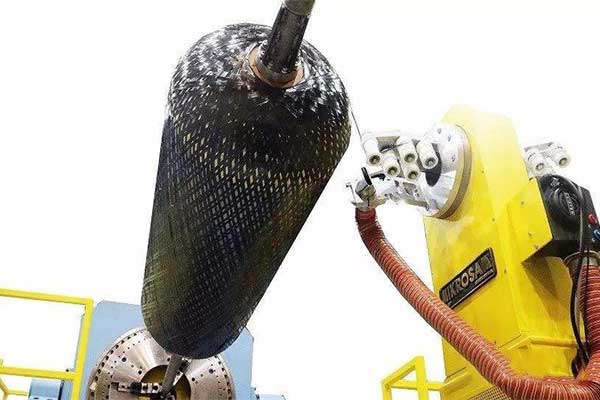
Three types of filament winding technology:
(1) dry winding: It adopts the pre dipping treatment of prepreg or belt, the winding machine by heating and softening to viscous flow state after a wound on a mandrel. Because of the prepreg (or belt) is a professional production, strictly control the resin content (accurate to within 2%) and prepreg yarn quality. Therefore, the dry winding can accurately control the quality of products. The biggest characteristic of dry winding process of high production efficiency, the winding speed is 100 ~ 200m/min, winding machine cleaning, labor health conditions are good, high quality of products. The disadvantage is the winding equipment is expensive, the need to increase the prepreg manufacturing equipment, the investment is large in addition, dry winding products the interlaminar shear strength of the low.
(2) wet winding: wet winding is the fiber bundle (yarn belt) dipping, in tension control directly wound on a mandrel. Advantages: 1, the cost of wet winding 40% lower than the dry process; the product has good air tightness, because the winding tension makes therein glue excess bubble extrusion, and fill the void; the fiber arrangement good parallelism; the wet winding, resin glue fiber, can reduce the wear of the fiber; production efficiency high (up to 200m/min). The wet winding shortcoming is: Cyclophosphamide resin waste, poor operating environment; the rubber content and product quality is not easy to control; the available for wet winding resin varieties less.
(3) semi-dry winding is wound fiber impregnation, on this way to the wound to the core mold, adding a set of drying equipment, the leaching solvent to remove rubber yarn, compared with dry process, save the pre dipping process and equipment; compared to wet method, can make the bubble content in the product to be lower.
 info@unicomposite.com
info@unicomposite.com


























